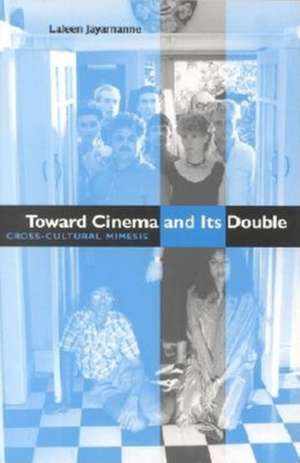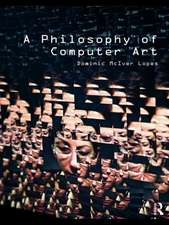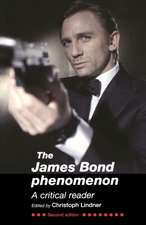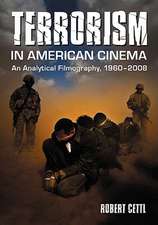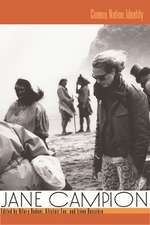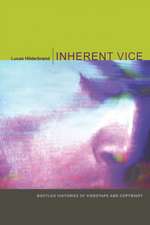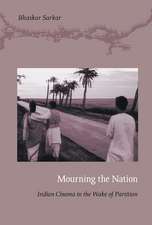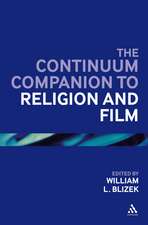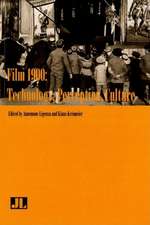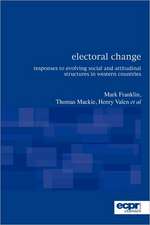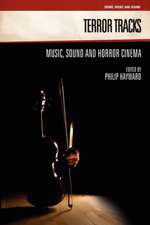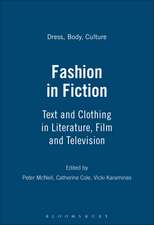Toward Cinema and Its Double – Cross–Cultural Mimesis
Autor Laleen Jayamanneen Limba Engleză Paperback – 25 sep 2001
Toward Cinema and Its Double addresses a number of issues that have been crucial areas of contention in film studies over the last twenty years--from the role of women both in front of and behind the camera, to the position of the postcolonial subject. Laleen Jayamanne demonstrates how arguments over these issues might be inflected in specific ways by specific practices in specific films. In addition, she places all these particularities in time - the time of the critic as well as that of the filmmaker. This collection contains work done over a span of twenty years, and rather than try to efface this time of writing by (re)presenting everything from a single, achieved final viewpoint, it foregrounds the way Jayamannes own thoughts about film in general, and the various films discussed, have changed over the course of time.
Preț: 185.03 lei
Nou
Puncte Express: 278
Preț estimativ în valută:
35.42€ • 38.48$ • 29.77£
35.42€ • 38.48$ • 29.77£
Carte tipărită la comandă
Livrare economică 21 aprilie-05 mai
Preluare comenzi: 021 569.72.76
Specificații
ISBN-13: 9780253214751
ISBN-10: 0253214750
Pagini: 336
Dimensiuni: 156 x 235 x 15 mm
Greutate: 0.54 kg
Editura: MH – Indiana University Press
ISBN-10: 0253214750
Pagini: 336
Dimensiuni: 156 x 235 x 15 mm
Greutate: 0.54 kg
Editura: MH – Indiana University Press
Cuprins
Contents
Introduction: Criticism as Exact Fantasy
Part One: Two-Way Street: Three Australian Films
A Sri Lankan reading of Tracey Moffatt's Night Cries; Reception, genre and the knowing critic: Dennis O'Rourke's The Good Woman of Bangkok; Post-colonial Gothic: the narcissistic wound of Jane Campion's The Piano
Part Two: Performance of Narcissism
Speaking of Ceylon: a clash of cultures; Anna Rodrigo interviews LJ on A Song of Ceylon(1988); Anna Rodrigo interviews LJ on Row row row your boat (1992)
Part Three: Melodramatic Femininity in Sri Lanka
Myths of femininity in the Sri Lankan cinema, 1947-1989; Sri Lankan family melodrama: a cinema of primitive attractions; An alternative cinematic and critical practice: Under the Bridge (Palama Yata) as critical melodrama
Part Four: Movements of Time
Deleuzean redemption of Bazin: a note on the neorealist moment; Modes of performance in Chantal Akerman's Jeanne Dielman, 23 quai de Commerce, 1080 Bruxelles; Life is a Dream, Raul Ruiz was a surrealist in Sydney: a capillary memory of a cultural event
Part Five: Convulsive Knowing
A slapstick time : mimetic convulsion, convulsive knowing; Eyes in the back of your head: erotics of learning in Blue Steel and Silence of the Lambs<I>; Forty Acres and a Mule Filmworks - Do the Right Thing - a Spike Lee joint: blocking and unblocking The Block
Introduction: Criticism as Exact Fantasy
Part One: Two-Way Street: Three Australian Films
A Sri Lankan reading of Tracey Moffatt's Night Cries; Reception, genre and the knowing critic: Dennis O'Rourke's The Good Woman of Bangkok; Post-colonial Gothic: the narcissistic wound of Jane Campion's The Piano
Part Two: Performance of Narcissism
Speaking of Ceylon: a clash of cultures; Anna Rodrigo interviews LJ on A Song of Ceylon(1988); Anna Rodrigo interviews LJ on Row row row your boat (1992)
Part Three: Melodramatic Femininity in Sri Lanka
Myths of femininity in the Sri Lankan cinema, 1947-1989; Sri Lankan family melodrama: a cinema of primitive attractions; An alternative cinematic and critical practice: Under the Bridge (Palama Yata) as critical melodrama
Part Four: Movements of Time
Deleuzean redemption of Bazin: a note on the neorealist moment; Modes of performance in Chantal Akerman's Jeanne Dielman, 23 quai de Commerce, 1080 Bruxelles; Life is a Dream, Raul Ruiz was a surrealist in Sydney: a capillary memory of a cultural event
Part Five: Convulsive Knowing
A slapstick time : mimetic convulsion, convulsive knowing; Eyes in the back of your head: erotics of learning in Blue Steel and Silence of the Lambs<I>; Forty Acres and a Mule Filmworks - Do the Right Thing - a Spike Lee joint: blocking and unblocking The Block
Recenzii
A Sri Lankan filmmaker, feminist, critic, and theorist who has worked in Australia for the past two decades, Jayamanne collects 15 old and new essays not otherwise easily accessible in most US libraries. The style is personal, even idiosyncratic, with occasional outbursts of self-indulgence. Jayamanne is an astute reader of films and a writer who avoids theoretical obscurity. She is opposed to the overvaluation of theory over criticism, [which has] impoverished the field. She has much to say that is intriguing about a range of subjects: postcolonial film and its travails, the gothic, the sublime, and melodrama, for example. Some sections will find only a small readership because few Americans have access to the films in question; but even the analyses of obscure films are worth reading for the insights they offer on feminist and Australian film and cultural criticism. Several chapters--on Chantal Akerman's films, The Piano, Do The Right Thing, and, above all, what Jayamanne calls the erotics of learning in Blue Steel and The Silence of the Lambs--will be accessible and suggestive for film majors and graduate students. Though no exactly comparable work exists, the book is embedded in the matrix of Australian feminist film criticism exemplified best in the work of Meaghan Morris.--K. Tololyan (Tololyan), Wesleyan University"Choice" (01/01/2002)
